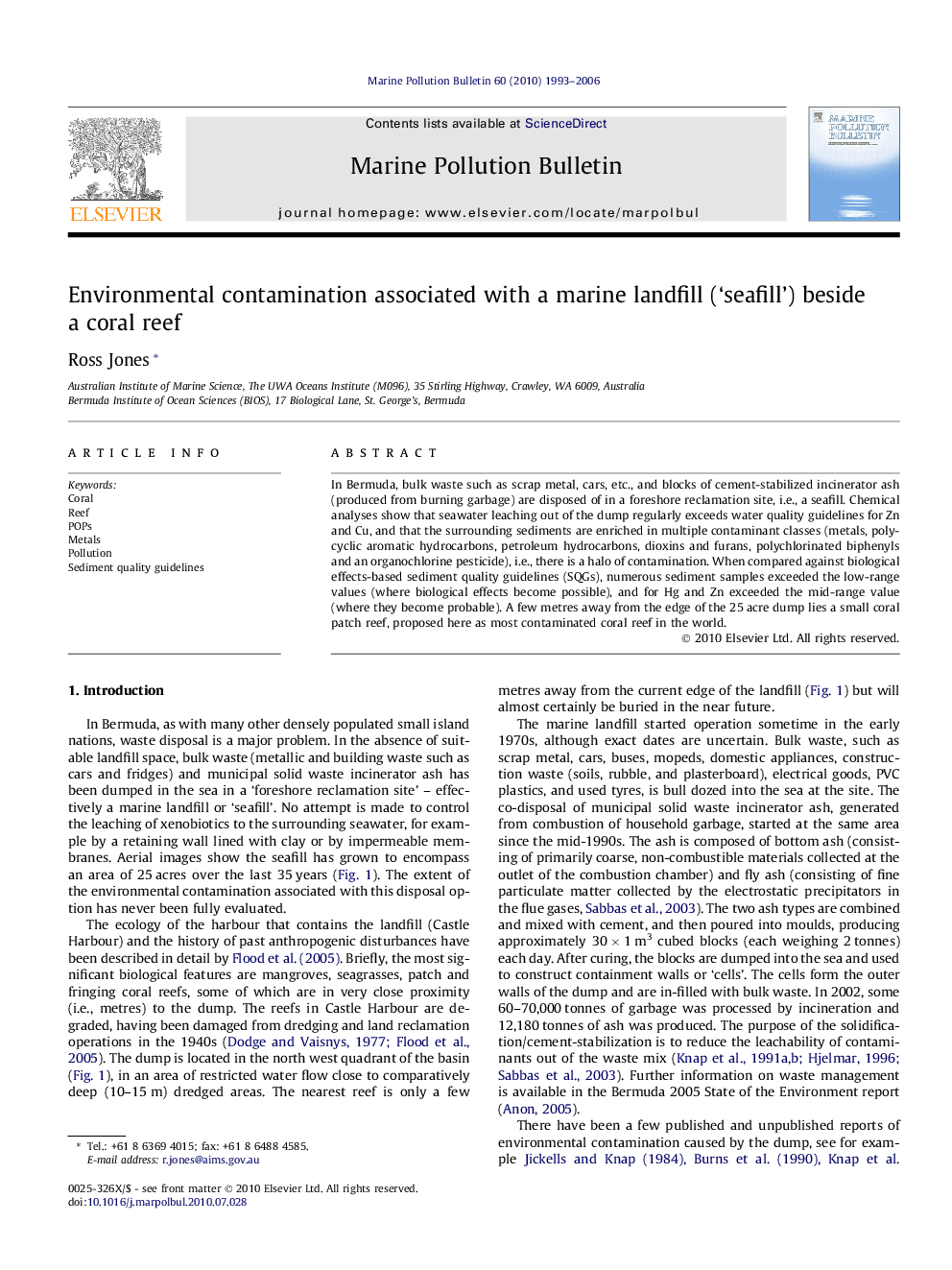| Article ID | Journal | Published Year | Pages | File Type |
|---|---|---|---|---|
| 6362273 | Marine Pollution Bulletin | 2006 | 14 Pages |
In Bermuda, bulk waste such as scrap metal, cars, etc., and blocks of cement-stabilized incinerator ash (produced from burning garbage) are disposed of in a foreshore reclamation site, i.e., a seafill. Chemical analyses show that seawater leaching out of the dump regularly exceeds water quality guidelines for Zn and Cu, and that the surrounding sediments are enriched in multiple contaminant classes (metals, polycyclic aromatic hydrocarbons, petroleum hydrocarbons, dioxins and furans, polychlorinated biphenyls and an organochlorine pesticide), i.e., there is a halo of contamination. When compared against biological effects-based sediment quality guidelines (SQGs), numerous sediment samples exceeded the low-range values (where biological effects become possible), and for Hg and Zn exceeded the mid-range value (where they become probable). A few metres away from the edge of the 25Â acre dump lies a small coral patch reef, proposed here as most contaminated coral reef in the world.
